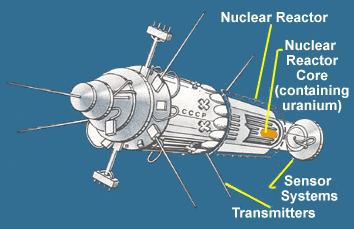 | |
|  |
|
|
| |
| Catching up with Ebb, Flow, and Phobos-Grunt | Jan 18, 2012 6:42 AM PST | url |
| | |
Added 1 new A* page:Updates on some previous space stories!
When I last talked about the twin GRAIL satellites, at the end of December, they were getting ready to get down to business making a gravity map of the Moon. They were also sadly lacking cool names, just having the names "A" and "B," like cats in Dr. Seuss or something. Well NASA held a contest among schoolchildren across the country, and the winning classroom in Montana duly renamed the probes "Ebb" and "Flow." A little too clever for my taste (darn these smart kids these days), but I'm neither a student nor Stephen Colbert and thus have no say in such matters.
~~~~~~~
And back in mid-November I mentioned that an ambitious Russian probe, Phobos-Grunt, intended to scoop up some dirt from the Martian moon Phobos and bring it back to Earth, malfunctioned after launch and got stuck in Earth orbit. It wasn't a stable orbit, and on Sunday Phobos-Grunt re-entered the atmosphere, burning up and scattering pieces across the southern part of the Pacific Ocean. The probe "was one of the heaviest and most toxic space junk ever to crash to Earth," but its flameout was claimed to pose "minimal" risk; only about 200 pounds of material from the 14.9 ton probe--11 tons of that being highly flammable rocket fuel--were supposed to survive to hit Earth's surface; the aluminum fuel tanks were predicted to burst and explode at about 100 km up.
The article says that the chief of the Russian Federal Space Agency, aka Roscosmos, acknowledged the probe wasn't really ready, and they'd rushed it to try to hit the narrow launch window for Mars. Their previous attempt at this, 1996's Mars-96, was built by the same company and also malfunctioned and crashed after launch; that one scattered 200 grams of plutonium over the Andes; Phobos-Grunt, on the other hand, only had a tiny bit of the slightly radioactive metal cobalt-57, and was thus much less dramatic.
There are some other interesting notes in that article:
- "about 100 metric tons of space junk fall on Earth every year" (that seems like a lot :o), and much bigger things have come down in the past without causing major damage, for instance the 85 ton Skylab space station in 1979, and the 143 ton Mir space station in 2001
- "The worst ever radiation spill from a derelict space vehicle came in January 1978 when the nuclear-powered Cosmos 954 satellite crashed over northwestern Canada. The Soviets claimed the craft completely burned up on re-entry, but a massive recovery effort by Canadian authorities recovered a dozen fragments, most of which were radioactive."
According to Wikipedia (my ad blocker seems to be blocking their 24-hour self-imposed blackout, neat! Don't tell Jimmy >_>), that recovery effort was called Operation Morning Light, and was a joint Canadian-American operation. Their eight-month recovery operation turned up 12 large pieces of the Russian satellite:

image by US Federal Government (source)
| All but two fragments recovered were radioactive. These pieces displayed radioactivity of up to 1.1 sieverts per hour, yet they only comprised an estimated 1% of the fuel. "One fragment had the (lethal) radiation of 500 R/h, which is 100 times higher than the maximum annual [per-person] radiation level of 5 rem." For these recovery efforts, the Canadian government billed the Soviet Union $6,041,174.70 for actual expenses and additional compensation for future unpredicted expenses; the U.S.S.R. eventually paid the sum of three million Canadian dollars. |
Neat! And that is probably why we don't have many nuclear-powered Earth satellites anymore...that we know of. >_>
|
·····
|
|
|
